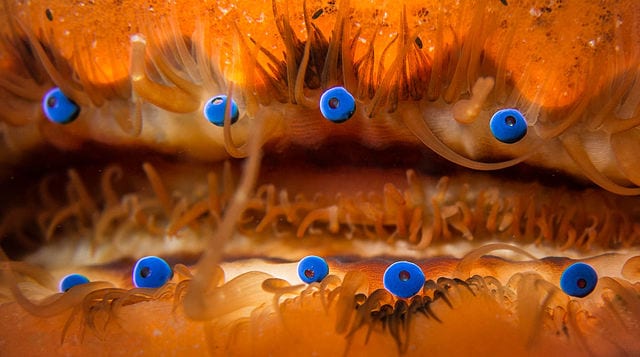Specimen of the Week 246: King Scallop model
By Dean W Veall, on 1 July 2016
Hello Hello, Dean Veall here. This week I bring you a snappy little character, well not exactly little, this is the KING of all snappy characters of a mollusc based persuasion. The king scallop (Pecten maximus) is this week’s Specimen of the Week.
Two valves are better than one
Belonging to the class Bivalvia, scallops are part of the group of animals called molluscs (which also includes gastropods such as snails and cephalopods such as squid). The king scallop like other species of scallop are found buried on the sea bed filter feeding on suspended phytoplankton, algae, and other micro-organisms.

King scallop taken by Dr Keith Hiscock, (published on the MarLIN website)
Is it real?
This is one of the questions we hear most in the Museum from visitors, and the answer to this one is a yes and no. The specimen is a wax model that incorporates the original shell of a king scallop. This specimen is part of a wider collection of invertebrate wax models in our collection, most of which came from the French studio, Maison Tramond. The Tramond models of invertebrates we have in the collection include (I think) some of our most beautiful objects, such this model of sea-anemones.
The studio opened its doors in 1878 and created hundreds of models, many of which were bought by museums for use in displays and teaching. I would assume this led to them being in the collection, helping students understand the soft tissue anatomy of these animals. It would seem that the studio published catalogues of specimens to purchase, but research by former curator Mark Carnall with the help of an expert Tramond visitor led him to conclude that this specimen and the other mollusc specimens were special orders, off catalogue, as they are of slightly higher ceroplastic quality.
Swimmers
Unlike other bivalves such as mussels and clams, scallops have the ability to be free-swimming. They do this by clapping their shells quickly, which moves a jet of water past the shell hinge, propelling the scallop forward. This is particularly useful when under attack from their main predators, starfish. But how do they sense a starfish as it approaches? Well…
Scallops have eyes

Scallop eyes by Matthew Krummins, CC BY 2.0
Lining the edge of the mantle of the scallop are brilliant blue eyes, between 60-100, that allow the animal to detect light, dark and motion. On first appearance these eyes appear to be no more than just blue dots, but it’s an incredible innovation within molluscs, their eyes are composed of a double layered retina and a parabolic mirror composed of guanine crystals that can focus light. Although not able to process exact shapes, scallops have the ability to detect changing patterns of light and motion combined with an exceptional contrast definition, which provides the animal with a vital early warning system when at threat from predation.
Dean Veall is Learning and Access Officer at the Grant Museum of Zoology
One Response to “Specimen of the Week 246: King Scallop model”
- 1
 Close
Close




[…] UCL: Specimen of the Week 246: King Scallop model […]